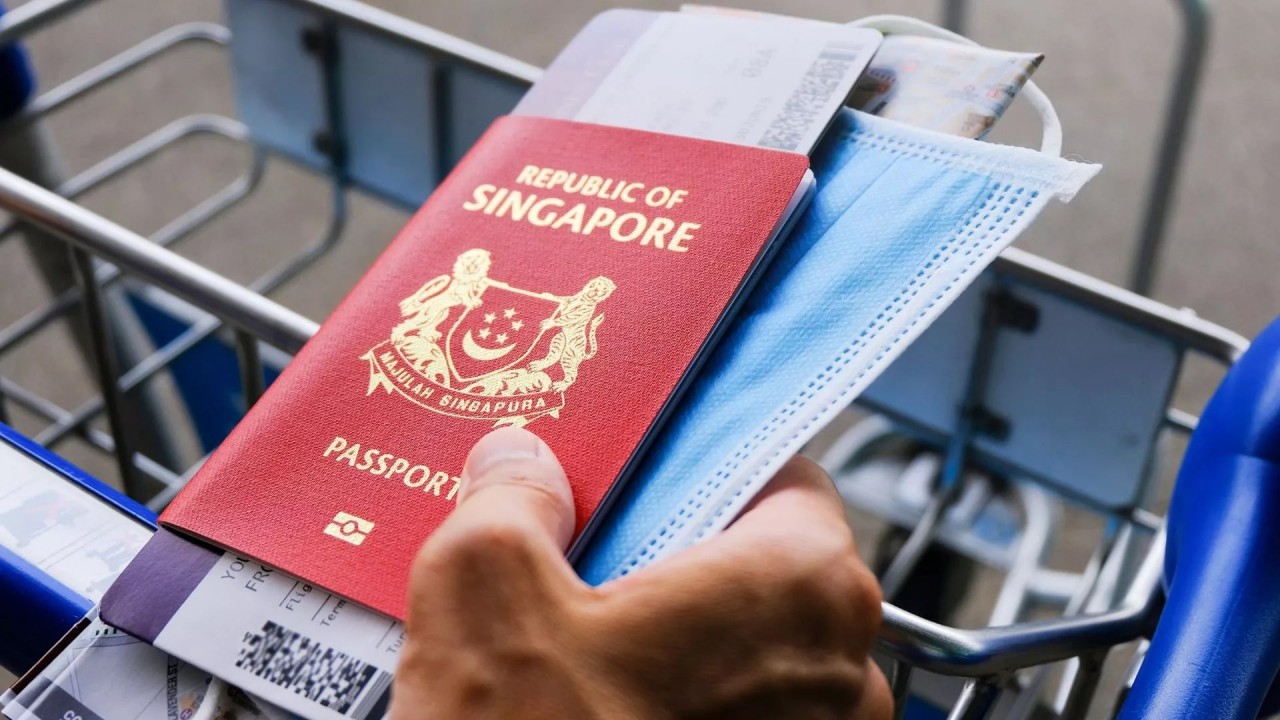Inside The Amazing And Extraordinary Underground City Of Turkey
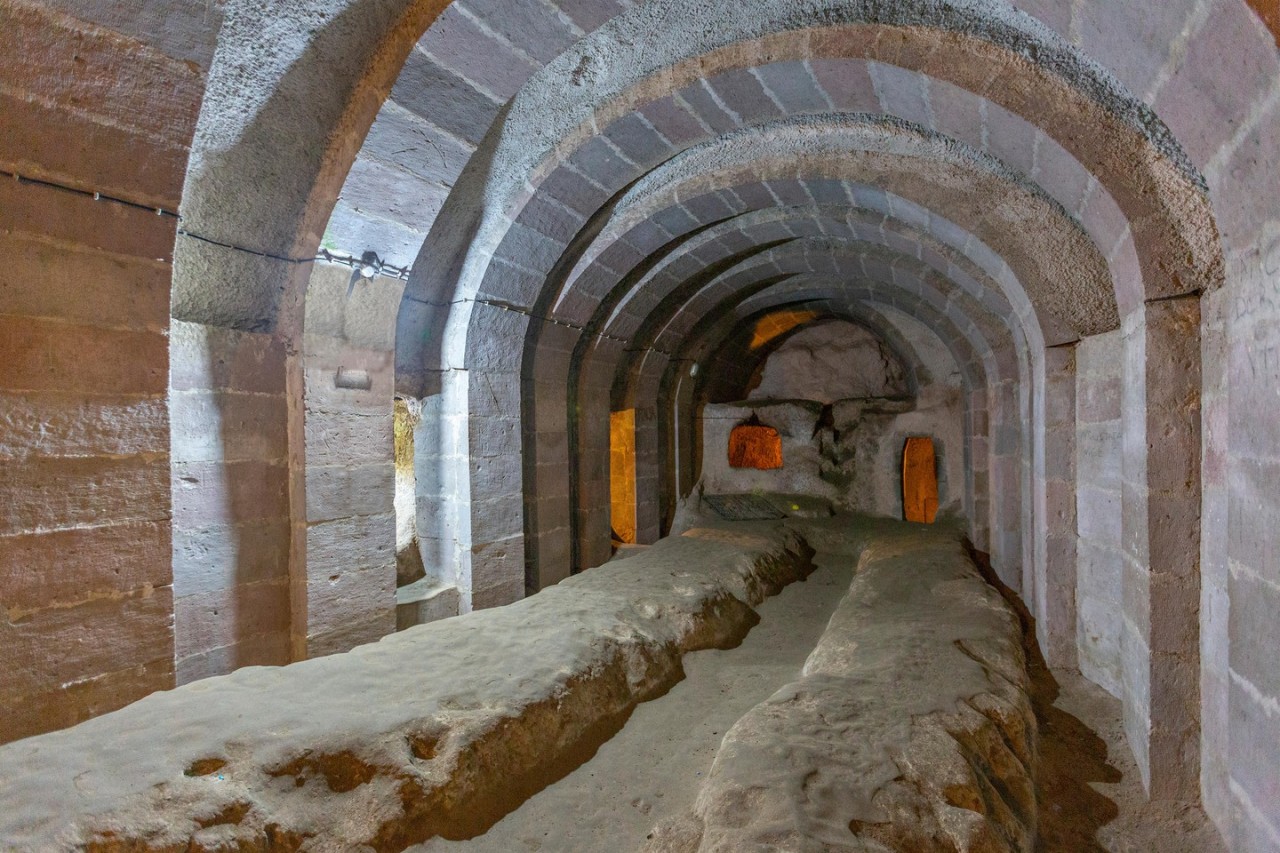 |
| Derinkuyu to other underground cities in the region | © MehmetO / Alamy Stock Photo |
The Derinkuyu underground city is an ancient multi-level underground city in the Derinkuyu district in Nevşehir Province, Turkey, extending to a depth of approximately 85 metres (279 ft). It is large enough to have sheltered as many as 20,000 people together with their livestock and food stores. It is the largest excavated underground city in Turkey and is one of several underground complexes found throughout Cappadocia.
The Derinkuyu underground city is located in the same named town Derinkuyu, which is situated 40km from Goreme (30 minute drive). There are about 600 outside doors to the city, hidden in the courtyards of surface dwellings. The underground city is approximately 85m deep. It contains all the usual rooms found in an underground city (stables, cellars, storage rooms, refectories, churches, wineries etc.) Apart from these, a large room with a barrel vaulted ceiling on the second floor was a missionary school, the rooms to the left being study rooms.
From the 3rd and 4th floors onwards the descent is by way of vertical staircases which lead to a cruciform plan church on the lowest floor.
The History of Derinkuyu
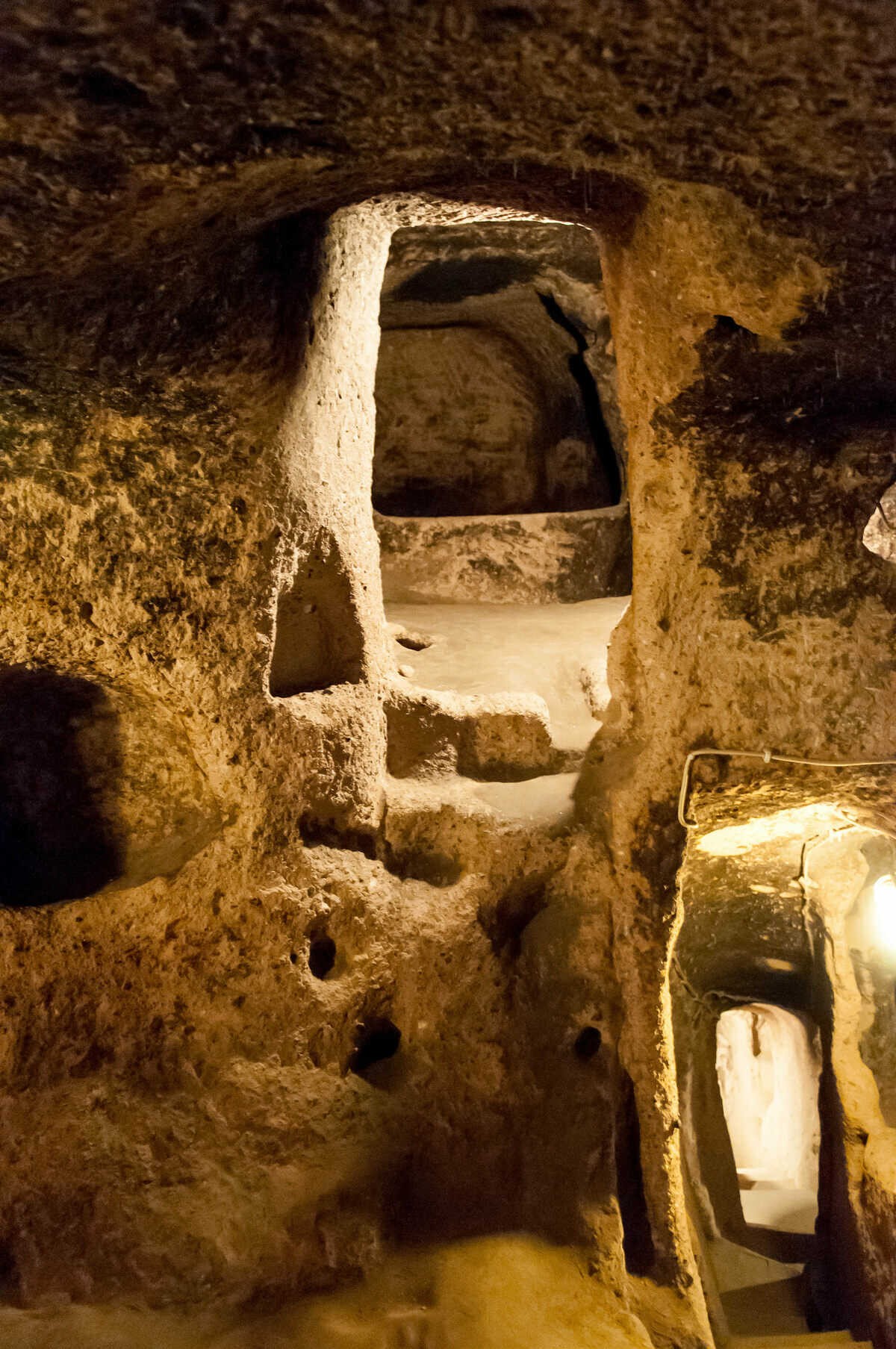 |
| Derinkuyu Underground City DAVID WELCH ON FLICKR |
Caves might have been built initially in the soft volcanic rock of the Cappadocia region by the Phrygians in the 8th–7th centuries BC, according to the Turkish Department of Culture. When the Phrygian language died out in Roman times, replaced with its close relative the Greek language, the inhabitants, now Christian, expanded their caverns to deep multiple-level structures adding the chapels and Greek inscriptions.
The city at Derinkuyu was fully formed in the Byzantine era, when it was heavily used as protection from Muslim Arabs during the Arab–Byzantine wars (780–1180 AD). The city was connected with other underground cities through many kilometers of tunnels. Some artifacts discovered in these underground settlements belong to the Middle Byzantine Period, between the 5th and the 10th centuries.
These cities continued to be used by the Christian natives as protection from the Mongolian incursions of Timur in the 14th century.
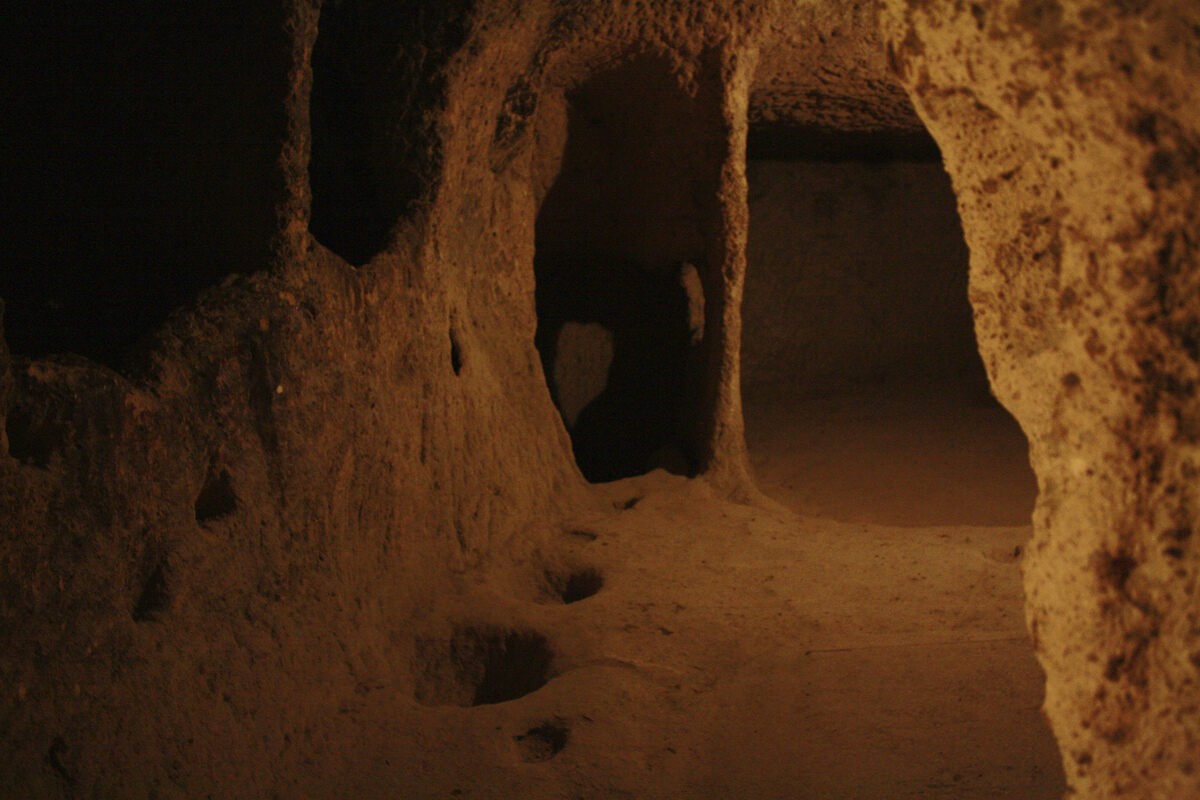 |
| Derinkuyu Underground City OH CONTRAIRE ON FLICKR |
After the region fell to the Ottomans, the cities were used as refuges (Cappadocian Greek: καταφύγια) by the natives from the Turkish Muslim rulers.
As late as the 20th century, the local population, Cappadocian Greeks, were still using the underground cities to escape periodic persecutions. For example, Richard MacGillivray Dawkins, a Cambridge linguist who conducted research from 1909 to 1911 on the Cappadocian Greek speaking natives in the area, recorded such an event as having occurred in 1909: "When the news came of the recent massacres at Adana, a great part of the population at Axo took refuge in these underground chambers, and for some nights did not venture to sleep above ground."
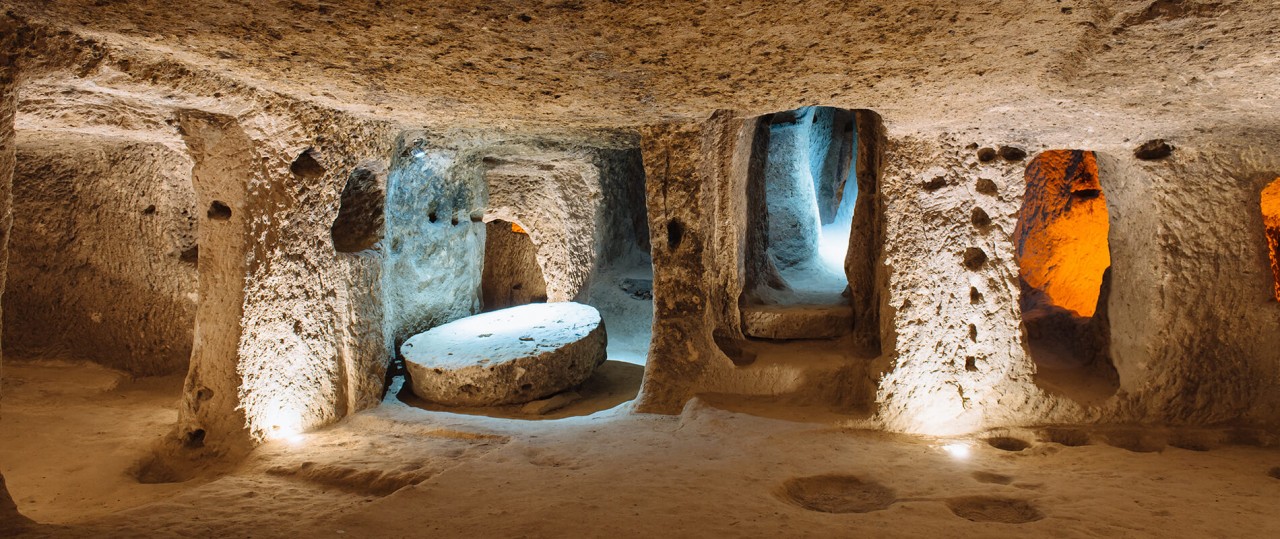 |
| Photo: MyBestPlace |
In 1923, the Christian inhabitants of the region were expelled from Turkey and moved to Greece in the population exchange between Greece and Turkey, whereupon the tunnels were abandoned.
In 1963, the tunnels were rediscovered after a resident of the area found a mysterious room behind a wall in his home. Further digging revealed access to the tunnel network.
In 1969, the site was opened to visitors, with about half of the underground city currently accessible.
A Masterpiece Underground
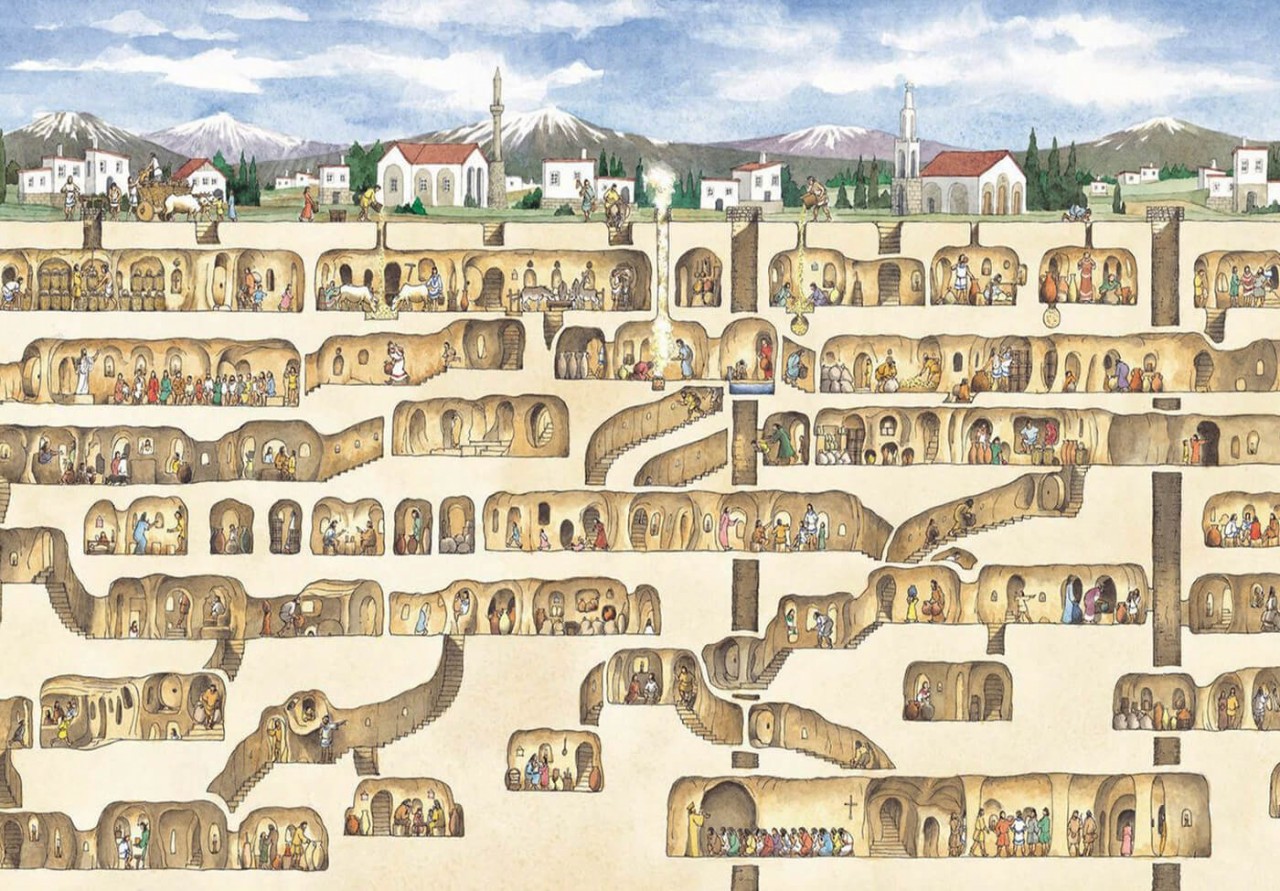 |
| Photo: MyBestPlace |
The 55m deep ventilation shaft was also used as a well. Not every floor was provided with water wells up to the surface in order to protect the dwellers from poisoning during raids. Derinkuyu contains at least 15,000 ventilation ducts that provide fresh air deep within the underground city. The Derinkuyu Underground City was opened to visitors in 1965 but so far less than half of it can be visited.
It is unlikely that the underground cities were ever intended for permanent dwelling, or even long stays, but they were clearly built to withstand attack and could support large numbers of people and their domestic animals, for extended periods of time. The urban organization was very complex, and there was probably always work in progress.
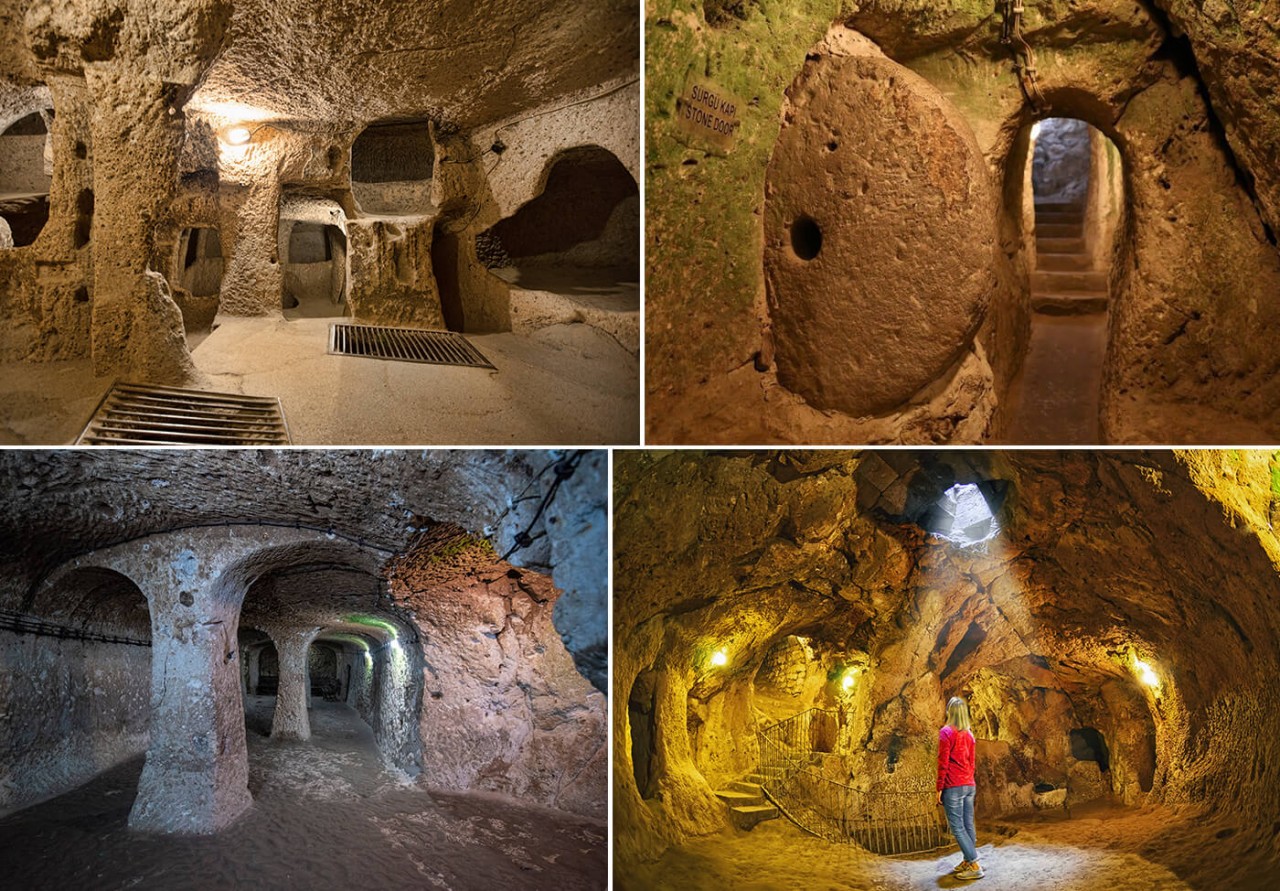 |
| Photo: MyBestPlace |
The extensive networks of passages, tunnels, stepped pits and inclined corridors link family rooms and communal spaces where people would meet, work and worship. The cities were complete with wells, chimneys for air circulation, niches for oil lamps, stores, water tanks, stables and areas where the dead could be placed until such time as conditions on the surface would allow their proper disposal. Most importantly, carefully balanced moving stone doors, resembling mill stones, were devised to quickly block the corridors in the event of an attack. Of course, these doors operated from one side only!
Other underground cities
Kaymakli Underground City
Originally named Enegup in ancient times, Kaymakli Underground City was also used as a shelter for local inhabitants for several centuries throughout the Arab-Byzantine wars. During this time, it was significantly expanded to the point where it, eventually, became the widest underground city in Turkey. It’s estimated that, at its peak, the population of Kaymakli grew to around 3,500 people.
After being opened to the public in 1964, it was awarded Unesco World Heritage status in 1985. It offers a fascinating window into the past, descending eight levels deep – although only the first four can be accessed by visitors, which lie at around 20m (66ft) below ground. As a general rule, the wealthiest families lived closer to the surface. While exploring Kaymakli, you’ll pass by stables, storage rooms (some of which are still used today), former homes, a church and communal kitchens, where meals were once cooked en masse for the city’s population.
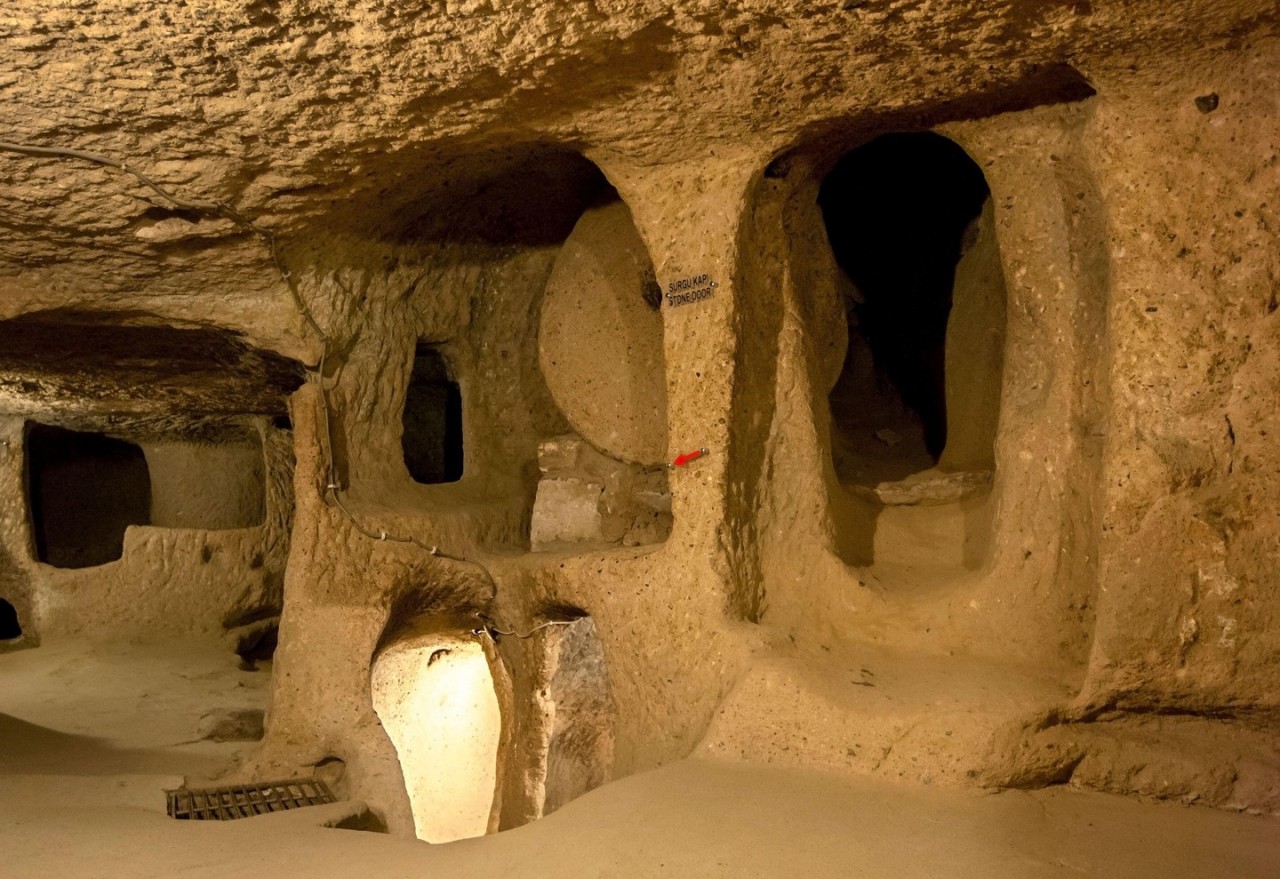 |
| Kaymakli is another underground city in Cappadocia, Turkey | © Thomas Wyness / Alamy Stock Photo |
As you meander through this subterranean labyrinth, you’ll also notice plenty of large, round boulders, which used to be rolled in front of doorways as barricades to protect the local inhabitants from potential attacks. Remember to pay attention to the red arrows, which guide you down, and the blue arrows, which guide you up, to avoid getting disorientated.
In comparison to its neighbouring underground city, Derinkuyu, Kaymakli’s tunnels are noticeably narrower, lower and more steeply inclined – worth bearing in mind if you’re claustrophobic. A 9km (5.6mi) tunnel actually connects the two, but it’s not accessible to visitors. You can drive between Kaymakli and Derinkuyu in just 10 minutes, though, so it’s easy enough if you fancy exploring both in one day.
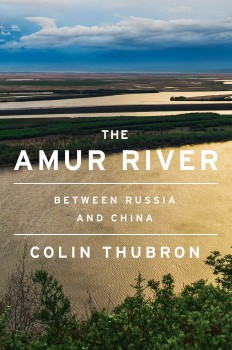 | 9 Best Books About Travel In 2021 With Covid-19 keeping us from traveling and exploring new destinations, these books will help you satisfy your craving for flying around the world. |
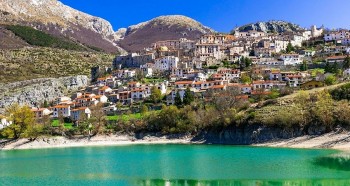 | Top 10 Best Places To Travel In 2022 With travelling being put on hold because of the Covid-19 pandemic, a lot of countries are hoping for a better chance in 2022. Here is ... |
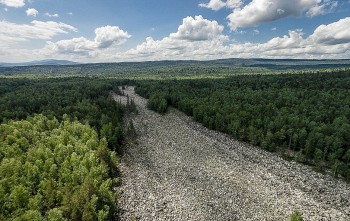 | An Infamous Natural Wonder: Visit The Giant Russia’s Big Stone River Big Stone River in Russia has been still for thousands of years and is covered in rocks and stones, but when you get closer, you ... |
Recommended
 World
World
"India has right to defend herself against terror," says German Foreign Minister, endorses Op Sindoor
 World
World
‘We stand with India’: Japan, UAE back New Delhi over its global outreach against terror
 World
World
'Action Was Entirely Justifiable': Former US NSA John Bolton Backs India's Right After Pahalgam Attack
 World
World
US, China Conclude Trade Talks with Positive Outcome
Popular article
 World
World
Nifty, Sensex jumped more than 2% in opening as India-Pakistan tensions ease
 World
World
Easing of US-China Tariffs: Markets React Positively, Experts Remain Cautious
 World
World
India strikes back at terrorists with Operation Sindoor
 World
World







